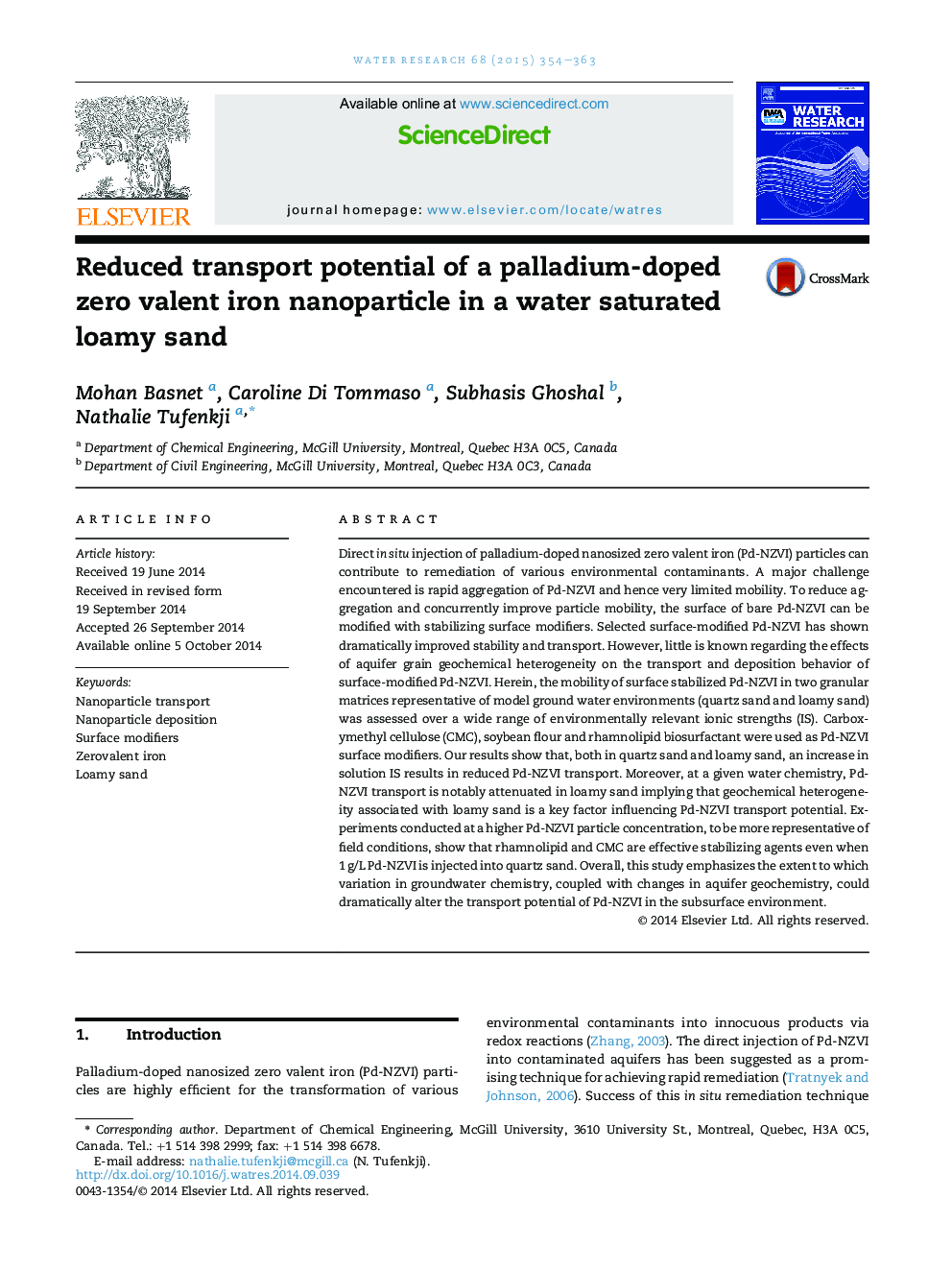| Article ID | Journal | Published Year | Pages | File Type |
|---|---|---|---|---|
| 6366313 | Water Research | 2015 | 10 Pages |
â¢Comparison of Pd-NZVI transport in quartz, loamy, and clay-amended sands.â¢Grain geochemical heterogeneity influences Pd-NZVI transport and dynamic deposition behavior.â¢Selected surface modifiers dramatically enhance Pd-NZVI transport at lower IS.â¢At a given IS, reduced Pd-NZVI transport in loamy sand versus quartz sand.â¢Selected surface modifiers are effective at high concentration (1 g/L) of Pd-NZVI.
Direct in situ injection of palladium-doped nanosized zero valent iron (Pd-NZVI) particles can contribute to remediation of various environmental contaminants. A major challenge encountered is rapid aggregation of Pd-NZVI and hence very limited mobility. To reduce aggregation and concurrently improve particle mobility, the surface of bare Pd-NZVI can be modified with stabilizing surface modifiers. Selected surface-modified Pd-NZVI has shown dramatically improved stability and transport. However, little is known regarding the effects of aquifer grain geochemical heterogeneity on the transport and deposition behavior of surface-modified Pd-NZVI. Herein, the mobility of surface stabilized Pd-NZVI in two granular matrices representative of model ground water environments (quartz sand and loamy sand) was assessed over a wide range of environmentally relevant ionic strengths (IS). Carboxymethyl cellulose (CMC), soybean flour and rhamnolipid biosurfactant were used as Pd-NZVI surface modifiers. Our results show that, both in quartz sand and loamy sand, an increase in solution IS results in reduced Pd-NZVI transport. Moreover, at a given water chemistry, Pd-NZVI transport is notably attenuated in loamy sand implying that geochemical heterogeneity associated with loamy sand is a key factor influencing Pd-NZVI transport potential. Experiments conducted at a higher Pd-NZVI particle concentration, to be more representative of field conditions, show that rhamnolipid and CMC are effective stabilizing agents even when 1Â g/L Pd-NZVI is injected into quartz sand. Overall, this study emphasizes the extent to which variation in groundwater chemistry, coupled with changes in aquifer geochemistry, could dramatically alter the transport potential of Pd-NZVI in the subsurface environment.
Graphical abstractDownload high-res image (216KB)Download full-size image
